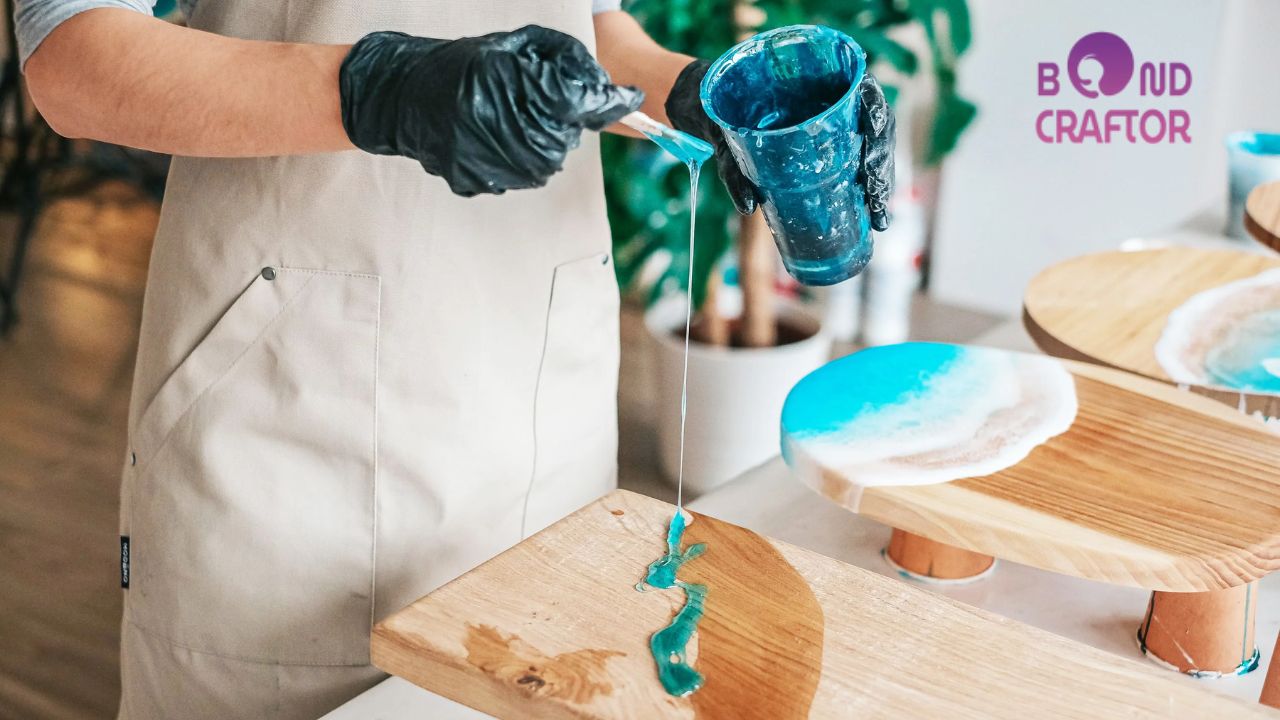Epoxy resin has numerous advantages that improve the utility and appearance of wooden creations. It gives a long-lasting and shiny surface that can turn any piece of wood into a masterpiece. However, the application of epoxy resin is much easier but requires preparation and proper application methods to give desirable results. The quick set epoxy resin is ideal for woodworking projects where fast curing is essential. This article will find practical advice on how to work with epoxy resin in woodworking.
Preparing the Wood Surface
The first thing is to choose the right type of resin. Epoxy resin is available in many varieties to meet different intended uses. A professional will always use a high-quality resin that is meant for woodworking to guarantee the right curing time, bonding, and the right strength. One must use a resin that is meant for wood surfaces since other resins may not stick properly to the wood fiber therefore leading to problems such as peeling or cracking.
Cleaning the Wood
It’s important to prepare the wood surface well to ensure it can hold the epoxy resin well. Epoxy resin bonds well to clean, dry, and smooth surfaces only. Before the application of the resin, it is necessary to sand the wood to the finest possible grit, to achieve a luster that will properly bind to the resin. Dust removal is equally important as well. Lastly, sanding is carried out on the wood, and after this process, the wood should be wiped with a clean cloth to remove all the dust that is on it. If not done, it results in some defects in the final surface of the material.
Applying the Epoxy Resin
It is advisable always to apply the resin on wooden surfaces in small sections when performing the work. This makes it easier to work on since one can control it appropriately and avoid the resin from starting to solidify before the whole area has been coated. In most cases, a dental foam brush or spatula may be used to spread the resin over the complete surface area of the mold. In large-scale woodworking, a pour method may be used where the resin is poured on the surface and spread with a spatula. This method is particularly beneficial when stabilizing wooden slabs, river tables, or large bulky surface table tops.
Eliminating Air Bubbles
When applying the resin, the professionals know that it is not good to have air bubbles around. Small pockets of air that may have been picked up during the mixing or application of the polyester resin can be a source of defects. To remove these bubbles, a heat gun or torch is usually applied. They had a feeling that heat aids in the release of the trapped air so that nothing hinders the smooth development of the bubble layers. However, it is important not to overheat the resin in order not to cause it to cure too early or even crack. I also suggest applying resin thin at a time as its thick application leads to bubbling or uneven hardening.
Filling Cracks and Gaps
In some cases, such as sealing gaps or cracks within wooden structures, epoxy resin can be very beneficial If there is a chance for the material to come into contact with water, then epoxy resin is the right choice. Filling a crack needs to be done where the crack is and the wood used has to be dry and any debris removed. For perfect appearance, the professionals apply pigment to the resin to resemble the interior or contrast the vibrating hue of the wood. Combined with the pigment to the resin to achieve additional patterns and enhance the natural wood grain pattern.
Allowing Proper Curing Time
Another important factor that affects epoxy resin is the curing time. Most resins take several hours to set to a point where one can touch it and up to 24-48 hours to fully set. Experts ensure that they give enough time for the surface to cure before they touch the project to prevent damaging the surface. In some cases, the resin can even take weeks, or more, to cure to 100 percent hardness especially if it was applied in thickness. One also has to be extremely patient when using epoxy resin because any hurry when curing will lead to poor outcomes.
Sanding and Polishing
The final requite of the epoxy coating process involves sanding and polishing due to existing rough surfaces and untidy appearance. Once the surface is well cured, it may be lightly sanded using an ascending series of finer grit sandpaper to remove any surface defects. Before applying any chemical or polish, the material is given a final polishing to give maximum luster to the resin surface to have a mirror-like finish.
Conclusion
To summarize, epoxy resin in woodworking involves preparation, detailed working, as well a time-consuming process. If these guidelines are followed, professionals can obtain excellent results by enhancing and improving the looks and performance of their creations in woodwork. By following these professional tips, anyone can apply epoxy resin to create long-lasting, stunning wooden items that will last for many years.

